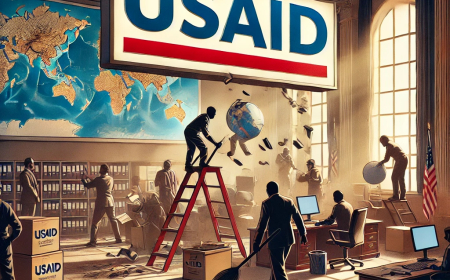The misery of auto tariffs is hitting families and factories
The price of the chaos has come due, and it’s being paid largely by working Americans.

It’s not as though we couldn’t have seen it coming. Section 4.26 of the Heritage Foundation’s Project 2025 made the case for tariffs on imported goods. The document argued that tariffs will force U.S. companies to onshore manufacturing.
Trump’s style of threatening and coercing U.S. trading partners with high tariffs has increased the toxicity of trade policy. This has all made for a rough start, with initial tariff announcements roiling the stock and bond markets and stoking consumer fear and uncertainty.
But now, two things have become clear. First, the Trump approach to tariffs has confused companies and the financial markets. Since March, employment has plummeted in industries with increased exposure to higher tariff-related costs. Second, and more important, the price of the chaos has come due, and it’s being paid largely by working Americans.
The trade wars reveal just how much Trump has sold a bill of goods to his political base. Tariffs drive up prices to U.S. consumers, both directly and indirectly. Tariffs on imported finished goods, and components that are used in domestic manufacturing, are passed on to consumers directly through higher prices, as we’ve seen with coffee. Tariffs also stifle competition from abroad by making imports more expensive. This loss of competition can spur domestic price increases, as we’ve seen with tariffs on imported solar panels.
Let’s take the high-profile case of automobiles. Automakers produce some models in the U.S. for sale here, make others for export and import other models. With tariffs on auto parts jumping from 2.5 percent to 25 percent, on steel from an original 0 percent to 50 percent and finished cars from 2.5 percent to 25 percent, costs are rising in all three areas.
Jeep maker, Stellantis, reported an expected $2.7 billion loss in the first half of 2025, partially due to tariffs. General Motors reported a $1.1 billion hit from tariffs on imported cars and parts in the second quarter of 2025. And Ford Motors estimates that tariffs will cost the company $1.5 billion in 2025.
We will see working Americans absorb the full force of these tariff-related cost increases, tariffs on imported vehicles from Asia and Europe and, to some (still uncertain) extent from Canada and Mexico, in higher automobile prices.
Because automobiles represent a sizable chunk of the average U.S. consumer’s budget, higher prices will be an enormous hit to paychecks and pocketbooks.
The Bureau of Labor Statistics estimates that consumer spending on transportation between 2020-2023 accounts for about 17 percent of the average American’s budget and new vehicles account for over 60 percent of that outlay.
Transportation ranks second among the five largest necessities that account for 75 percent of total consumer spending, preceded by housing (first) and followed by food (third).
Moreover, multiple cohorts depend heavily on cars for transportation. Over 90 percent of adults rely on personal vehicles for their commute to work. And in rural areas, for swing- and night-shift workers, and for families, car ownership is essential.
Simply put, working Americans spend a lot on automobiles because they have to. And for many Americans, a car is an absolute necessity.
Tariff-induced higher prices for automobiles carry a significant opportunity cost for consumers. Tariffs are expected to increase the price of a new automobile by between 6 percent and 22 percent. That’s an additional $3,000 to $10,500 per new car purchase, piled onto the average automobile price of $48,000.
By way of comparison, this incremental cost is the equivalent of about five weeks of the average U.S. family food budget or 14 weeks of rental housing or mortgage payments.
Budget-constrained consumers make careful choices about how to spend their paychecks. For necessities like automobiles, higher tariff-induced prices will force them to cut back on spending in other important areas. The sheer size of this forced rebalancing stands, on balance, to further tighten budgets and lower working Americans’ quality of life.
The Trump administration’s willful ignorance of how tariffs hit working Americans and is coming home to roost.
In March, Trump stated that the administration did not care about whether automobile tariffs drive up consumer prices. And faced by complaints from Wal-Mart, Amazon and Mattel in May, Trump told U.S. companies to “eat the tariffs” instead of passing them on to consumers through higher prices.
The ultimate tariff hit to paychecks and pocketbooks will be painful. Moreover, even if Trump’s draconian policy was remotely successful in spurring the onshoring of U.S. manufacturing, it would take far longer than the three and a half years left in Trump’s final and devastating presidential term.
So far, there’s no sign that will happen. To the contrary, manufacturing has been shedding jobs and pulling back on investment this year.
Democrats should be looking now to find ways to advertise that Trump’s tariff policy puts working Americans in the cross-hairs, and to campaign on reversing the policy and mitigating the harm.
Diana Moss is vice president and director of Competition Policy at the Progressive Policy Institute.
What's Your Reaction?








































